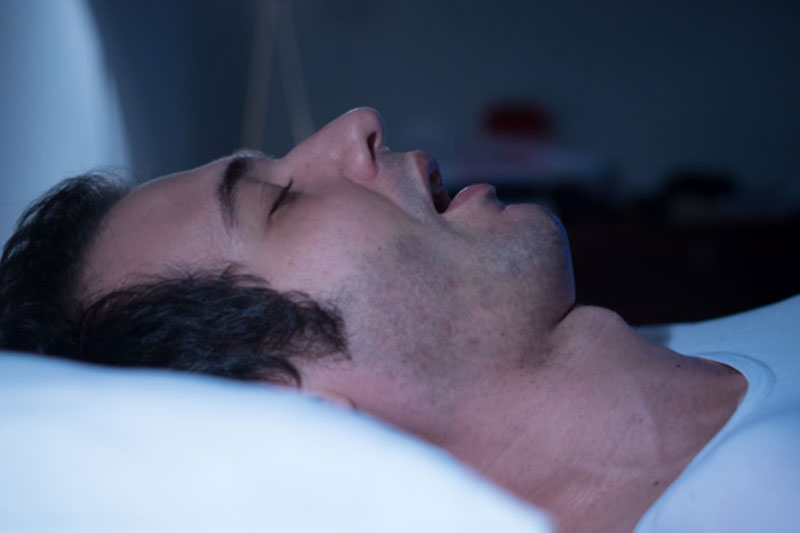Satellite Office
4660 Kenmore Avenue, Suite 416Alexandria, VA 22304
703-620-4300

More people are aware of obstructive sleep apnea than ever, but while about 25% of the U.S. population above 30 years of age has it, experts estimate only 15% of people with the condition have been diagnosed. That’s terrible news for our country’s health and safety.
Obstructive sleep apnea (OSA) occurs when the muscles in a person’s throat become too relaxed. The tongue blocks a portion of the airway, making breathing difficult. People with sleep apnea wake up for short periods throughout the night to reopen their airways, and without proper treatment they have increased risks of heart disease, including heart attacks and atrial fibrillation. They also have an increased risk of a stroke, Alzheimer’s, diabetes, hypertension, and some forms of cancer. But most people with OSA don’t remember waking up and only become aware of the problem when a spouse or partner mentions it.
Fortunately, there are other signs and symptoms to watch out for, including morning headaches, irritability, chronic daytime sleepiness, impaired concentration, frequent nighttime urination, depression, astroesophageal reflux, large neck size.
MDCalc.com and StopBang.ca/osa/screening.php offer a STOP-BANG test, which can assess your risk of sleep apnea. It is a quick questionnaire, and anyone with a score of 3 or higher should discuss the condition with their doctor.
Surprisingly, your eyes may also carry a physical marker of sleep apnea. It’s called floppy eye syndrome, and about 30% of people with sleep apnea have it. Alternatively, if you are diagnosed with floppy eyelid syndrome you have over a 90% chance of having obstructive sleep apnea. Floppy eyelid syndrome patients have lost the elastin fibers in the tarsal plate that makes the otherwise rigid backbone of the upper eyelid rubbery in consistency. Additionally, your upper eyelid lashes tend to hang in a downward direction especially on the outside corner of the upper eyelids. Floppy eyelid syndrome patients can also have an associated chronic conjunctivitis caused by the eyelid flipping over from pressure on the pillow while sleeping.
If you have a floppy eye syndrome, a high STOP-BANG score, or experience other sleep apnea symptoms, you should promptly schedule a visit with your doctor. They may enroll you in a sleep study to confirm a diagnosis and prescribe a CPAP machine as treatment. A CPAP machine is a device you wear while sleeping. It maintains a low positive pressure level at all times to keep your airway from closing, allowing you to sleep safely through the night. In addition to CPAP machines, there are now several other alternatives for treating obstructive sleep apnea.
| After receiving treatment, people with sleep apnea generally report better moods, more alertness, improved memory, and reduced fatigue. Don’t let fear get the better of you. Talk to your doctor about potential sleep apnea to live longer and improve your quality of life. |
  |